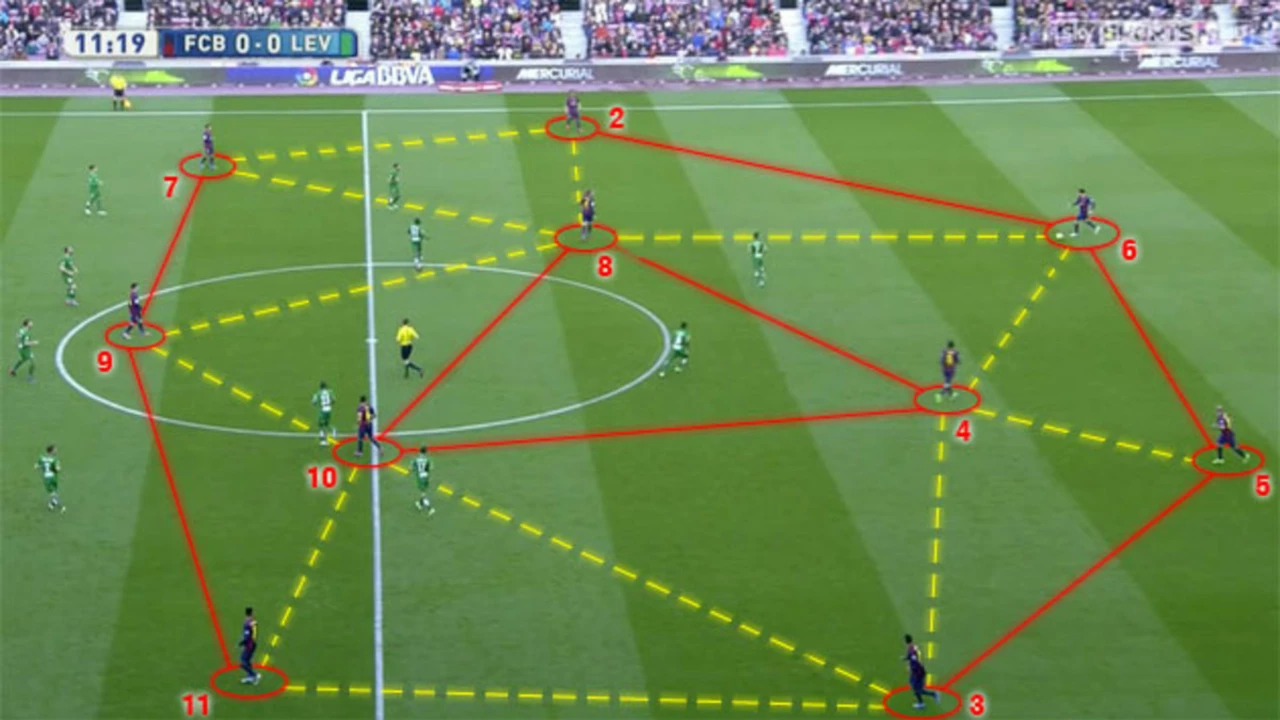Understanding the Importance of Speed in Soccer
Let's kick off this discussion about soccer by addressing one of the most important attributes a player can have: speed. No matter what the sport is, there are few characteristics that capture the imagination quite like explosive speed. The tantalising thought of a player darting downfield, evading competitors, and creating opportunities is a concept that can energise any fan. But here’s what I often ponder as a devoted soccer enthusiast: where should the fastest player be positioned on the pitch? A bit of an enigma, isn’t it?
For anyone not much into soccer, the answer might be seemingly simple. Just stick them up front, let them dash past the defense, score some goals. But I, Kieran, am here to elucidate why that line of reasoning might not fully utilise the fantastic gift of speed. To accomplish this, we must dissect the roles of several positions, understand their responsibilities, and analyse how speed could intensify their effectiveness.
Crafting the Ideal Striker: The Fuse of Speed and Skill
Let’s start with the most glamorous role in soccer: The striker. Are goalscorers the ideal role for your quickest player? Well, it's not as clear-cut as you might assume. Of course, it's undeniable that speed plays an elemental part in creating scoring opportunities. The ability to shake off a defender and speed towards the goal is a sight to behold.
However, being a successful striker requires a whole lot more than just raw speed. It needs a complete suite of skills: accuracy, strength, agility, and most importantly, a killer instinct in front of goal. Having speed without these skills is like having a sports car with no engine. It looks great, but it's not going anywhere fast. To further compound matters, a striker's position often means they are facing the opposing team's toughest defense, making it harder for them to utilise their speed advantage against a well-organised unit.
Wingers: Unleashing Speed on Flanks
Another position where speed continues to be invaluable is out wide – the wingers. Not only their primary role in most formations is to create scoring chances, they are also optimally located to take full advantage of space in the opponent's half. With the right combination of speed and dribbling skills, wingers can create nightmares for opposing defenders on the flanks. Their speed creates room for crosses, and makes quick, precise passes to the striker, for shooting opportunities.
However, just like the striker, a good winger needs more than just speed. They need exceptional ball control, a proficient overview of the field, and the knack to deliver precise crosses into the box. Even world-class speed can be nullified by poor ball delivery. Moreover, many teams employ a defensive strategy that minimises breaching opportunities for fast wingers, forcing them into less-impactful areas of the field.
Midfielders: Incorporating Speed into Central Strategy
Now, let’s talk about the midfielders. Midfielders are the fulcrum of any team, contributing to both attack and defense. A speedy central midfielder can dominate the pace of the game and control the game's flow. Their speed can help them overcome adversaries in one-on-one situations and spawn opportunities for goal-scoring passes. Additionally, their speed can be valuable in tracking back and disrupting opposing attacks.
But similarly to other positions, a fast-paced midfielder needs more in their arsenal than just speed. They need a high degree of technical skills, possession and vision. Speedy midfielders often find it tough to control their quickness, resulting in relinquished possession and missed opportunities. However, a player who can combine speed with tactical understanding and precision could create a fantastic central midfielder.
The Defensive Perspective: What About Fast Center-backs?
The idea of the fastest player playing in defense might seem antithetical initially, but there's a certain logic behind it, isn’t there? A fast player could easily shut down attacking threats, cover for their partner in defense, and initiate counter-attacks swiftly. The speed not only assists in preventing goals but also act as a deterrent for attackers looking to exploit space behind the defense.
However, it's also worth noting that defending requires measures of strength, wisdom, and positioning which might not come naturally to a player blessed with exceptional speed. They need to be able to match stronger players physically and outsmart players tactically, which can be a tall order. Yet, a fast, intuitive center-back, though a rarity, would be a gem in the heart of defense.
In a funny way, this takes me back to my college days when I was selected to play the center-back position because of my speed, much to my chagrin. I was nowhere exceptionally strong or tactically wizard, but just significantly fast. The move was an experiment at first, but it turned out to be a game-changer. Imagine a lanky, air-headed Kieran, armed only with my fleet feet, grappling with burly forwards. That was me, giving attackers a run for their money, literally, and unwittingly establishing a solid defense line!
Conclusion: Versatility Over Speed
Ultimately, the fastest player's position in soccer is reliant on how that speed is harnessed and complemented by other skills. At the peak level of this beautiful game, speed without technical prowess, footballing intelligence, and positional understanding gets reduced to a mere spectacle. A player's quickness is best utilised where their skills guarantee they are in the right positions to make it count.
So to you future soccer players and coaches out there, remember this: don’t wedge your speedsters into roles that might not fit their skill set. Just because they’re quick, doesn’t mean they’re your shiny new striker. Rather, assess what other assets they bring to the game and position them where they truly excel. In soccer, as in life, not every fast individual is destined for the finish line; sometimes, they are needed most at the heart of the action.

Write a comment